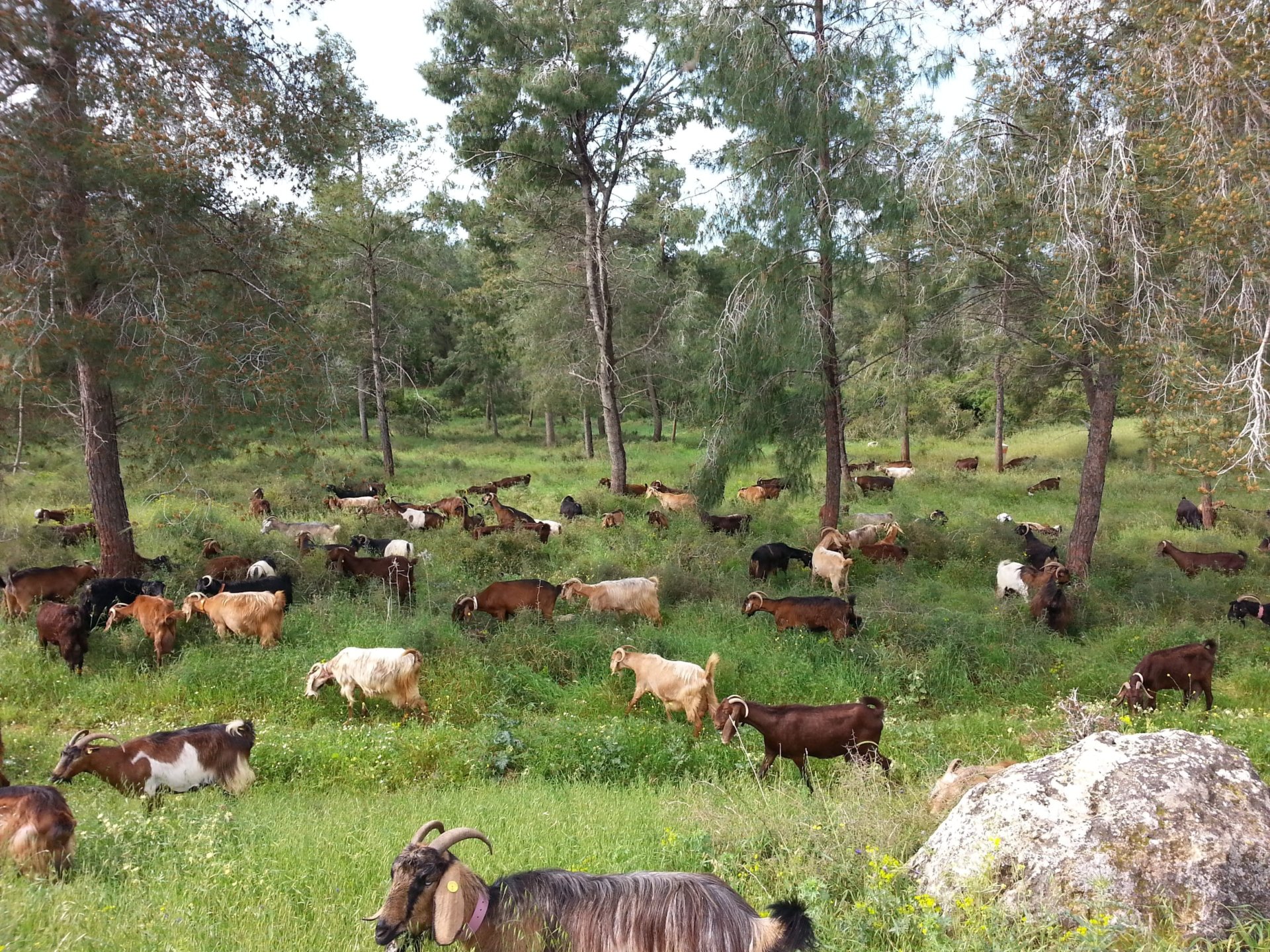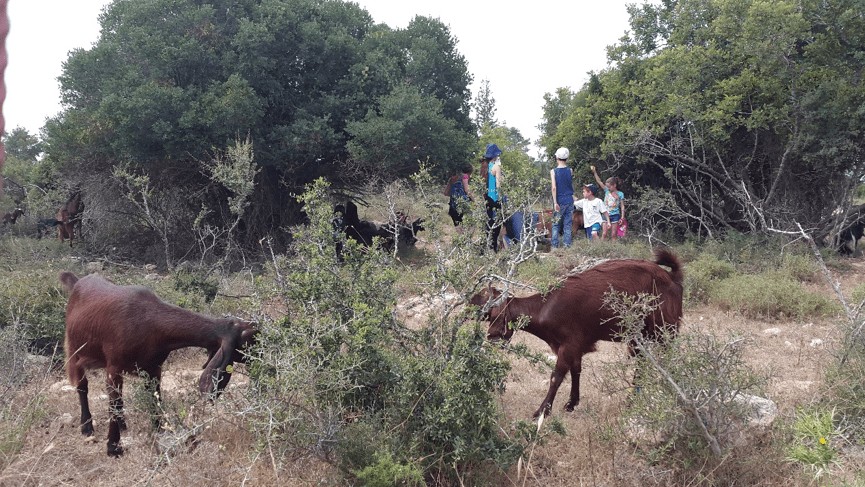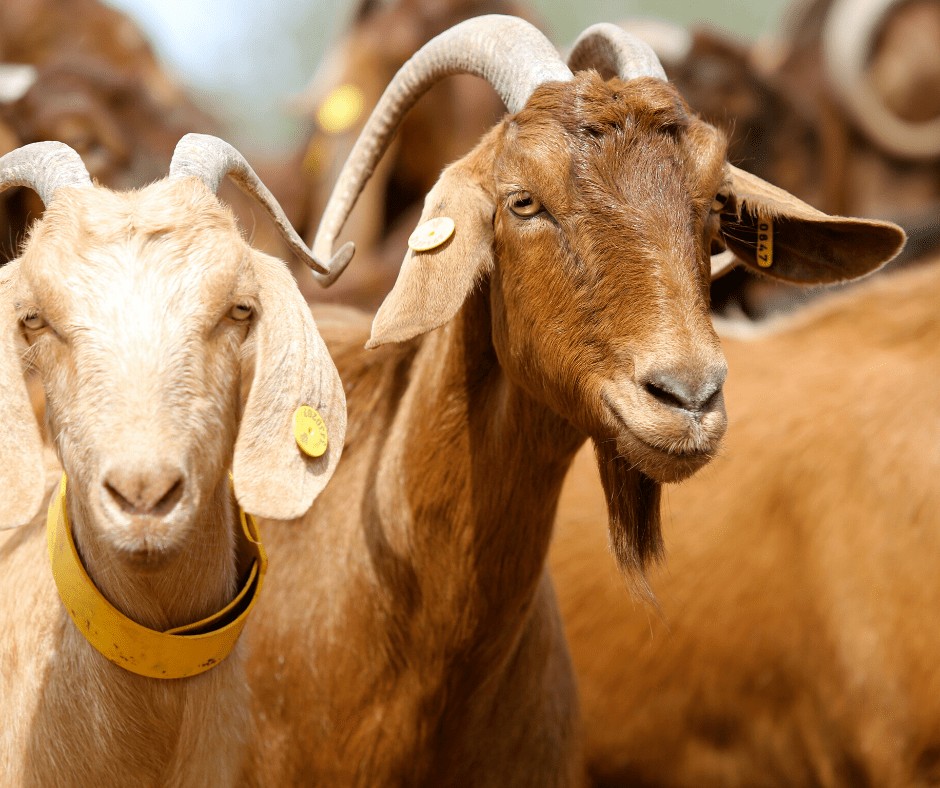
Grazing in Israel:
Organized grazing in Israel in woods and forests is influenced by two main entities. The first is livestock breeders (most breed for meat and the minority for milk) who use rangeland as the source of food for their herds. The second entity is comprised of those who manage open spaces (Israel Nature and Parks Authority, KKL, Israel Land Authority, Ministry of Agriculture) who take advantage of the breeders’ desire to use the pasture areas in order to obtain grazing services in the areas they manage. The nature of the relationship between the different breeders and the managers of these areas varies greatly and ranges from positive cooperation to hostility and oppression. At first glance, it seems that there is a complementary interest shared by these two entities (the breeders and the managers of the areas). It seems that the general interest of the breeders to obtain food from the rangeland on the one hand and the area manager’s interest to regulate the vegetative biomass on the other, would foster collaboration. Conflict of interest arises on the internal level of the herd’interface which includes many needs (water, shelter, fencing, mobility, livelihood, etc.) and the area interface which also features many diverse needs (various grazing pressures, timing of the grazing, size of the herd, etc.).

As long as the breeder’s need for rangeland is greater than the area manager’s need for the grazing service, the area will benefit from the grazing (although unsupervised grazing in many cases causes damage). However, when it is not cost effective for the breeder to use the rangeland areas, the area will not benefit from the service provided by the grazing. This is the current ‘method’ used in Israel. The subject of grazing is regulated by the prohibition against grazing or permission to graze in specific areas.
In recent years, there has been a trend to encourage the introduction of herds into areas of rangeland. This trend is seen in the attempts to regulate the issue of grazing (“The New Rangeland Law”), the Ministry of Agriculture’s investment in rangeland (by the Agriculture Ministry’s Rangeland Authority) and even economic incentives for the use of the rangeland areas. It is important to note that this encouragement is driven by multiple goals, including “preventing unauthorized takeover, preserving the ecological equilibrium, safeguarding the landscape and social contribution, preventing the land from being left uncultivated, and ensuring the continued toiling of the land by an active agricultural population” (The Office of the VP of Production and Economy at the Ministry of Agriculture, 2009).

Moreover, the New Rangeland Law is designed to regulate the use of the rangelands, in order to ‘regulate the utilization of the rangeland, prevent overuse and inappropriate use of the land, prevent disputes between farmers, to fight against agricultural theft, trespassing and criminal activity in the agricultural field as well as to increase law enforcement and the enforcement of the tax laws in the cattle and sheep industry” (The New Rangeland Law proposal, 2007). Financial incentives from the direct support of The Ministry of Agriculture for use of rangeland, does not primarily come from the ecological needs related to handling the area. Nor does it stem from the desire to encourage farm grazing. This situation can be defined as “grazing in open areas” and not as “interface or controlled grazing” for the purpose of servicing the area or preserving the ecological qualities of the open areas.
Grazing at Ramat Hanadiv: The Ramat Hanadiv Nature Park is managed using an ecological world view and advanced interface tools. Park Management is expected to reach targets such as leisure and recreation, protection against fires and enrichment of the landscape and biodiversity. Grazing in the park serves as a tool for reduction and restriction of the danger of fires in open spaces and to safeguard the variety of habitats and biodiversity. While the Nature Park’s land serves as nourishing rangeland for animals, the quantity of vegetation that will become dry fuel later in the season is reduced as a result of the grazing activity.

When limitations are placed upon the grazing or on alternative interface tools to remove the dry vegetation, flammable materials, such as dry grass, accumulate in the area and serve as the fuel for the next fire. In addition to reducing the danger of fires, grazing also contributes to the protection of the landscape diversity characteristic of the region, by creating a mosaic of patches with and without grazing.
The Herd of Goats at Ramat Hanadiv: The herd of goats at Ramat Hanadiv goes out to pasture to graze daily in the park based on a predetermined grazing plan. The plan is designed to meet the ongoing management needs of the park. Control of the grazing and the removal of the vegetation is conducted through daily monitoring using a GPS devise that is affixed to the herd and follows its location during grazing. Concurrently, an analysis is done of the change in the structure of the vegetation in places where grazing occurred. Every few years, the plan is reassessed and updated based on the changes in the area and the needs of the park. The monitoring plan supports the grazing activity and allows for the implementation of the adaptive interface method in which every step that is taken is examined over time. It is subject to change based on the conditions in the field. In addition to the grazing services provided by the herd, the herd also produces 80,000 liters of milk per year that are used to produce high quality, delicious and healthy yogurt
Any question? We will be glad to help
Of further interest...
Accessibility
Accessible Trails
We have worked hard to make our buildings, infrastructure and service accessible to special sectors of the population so that everyone can enjoy an accessible and enjoyable visit to the Memorial Gardens and Nature Park.
Sustainability
Establishment of the Partnership for Regional Sustainability
In 2015, Ramat Hanadiv established the Partnership for Regional Sustainability, aiming to combine forces for the quality of life in the region.
Dining Here
Dining-The Picnic Site
The picnic area is located near the secondary parking lot. You are welcome to spend time there before or after your tour of the Gardens.

